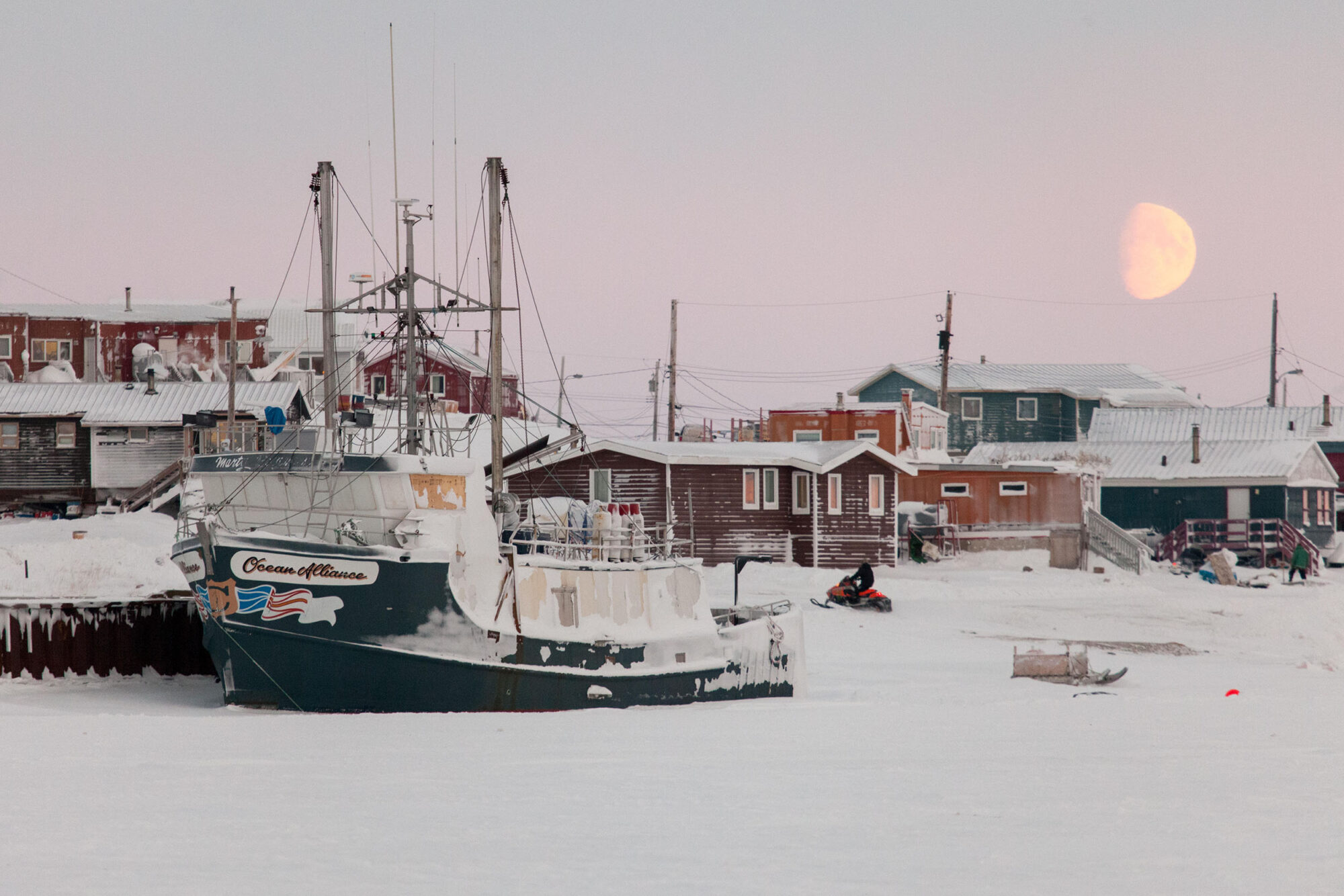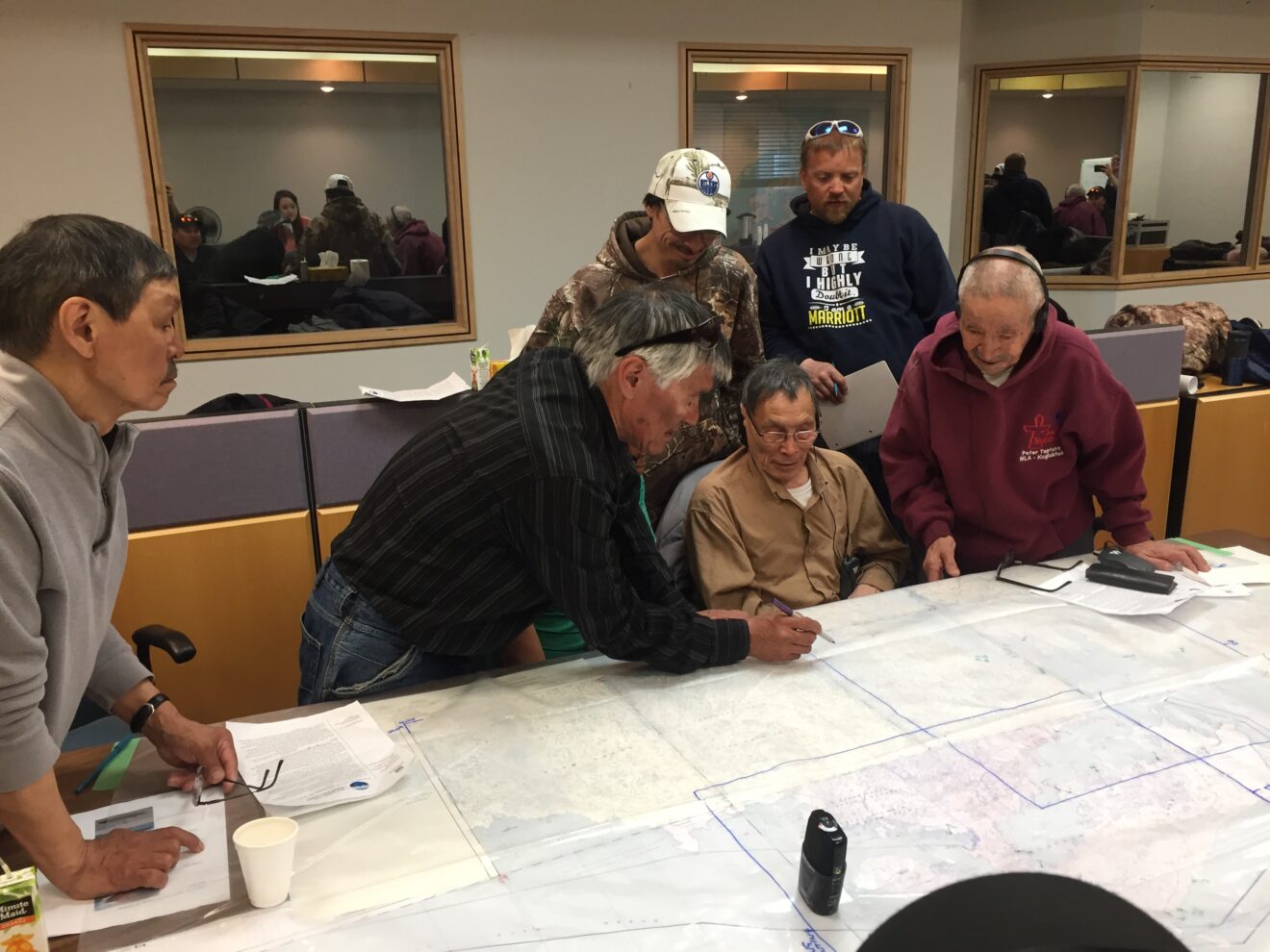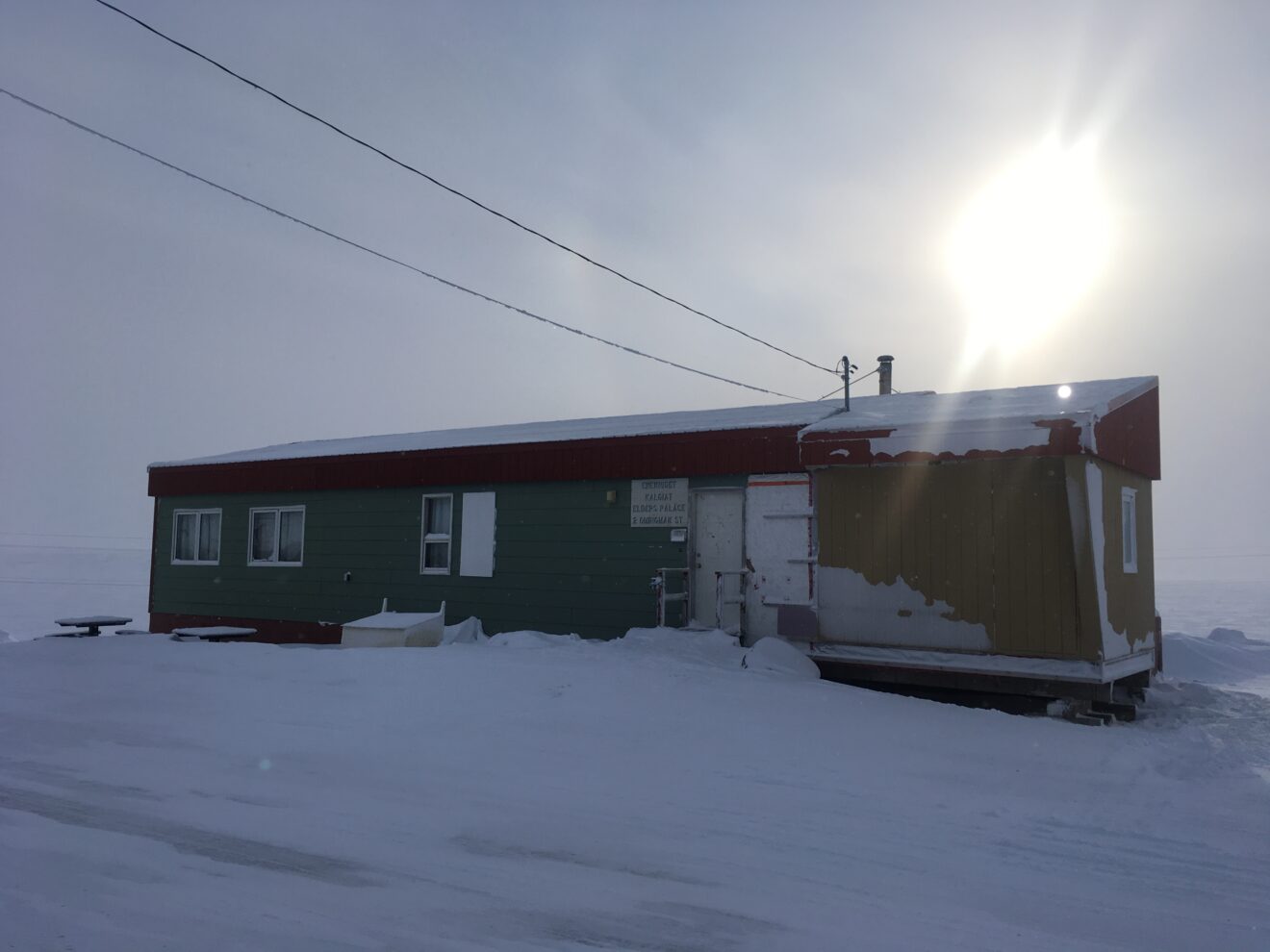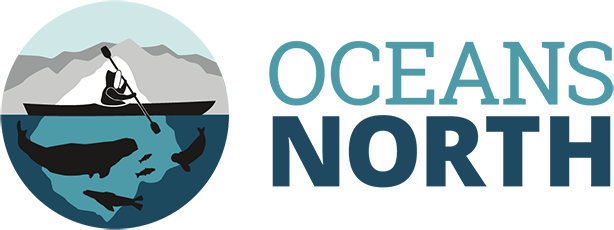
Cambridge Bay Community Shares Concerns About Impact of Arctic Shipping
Credit – Jason Pineau
Cambridge Bay Community Shares Concerns About Impact of Arctic Shipping
Olivia Mussells | April 9, 2018
Cambridge Bay community members shared their concerns about the impact of increased Arctic shipping during a workshop organized by the University of Ottawa’s Environment, Society and Policy Group and Oceans North.
We have gathered in the Elders’ Palace in Cambridge Bay, Nunavut on an overcast day in March to share the results of an Arctic shipping workshop. Outside, it’s a brisk minus 20 degrees Celsius but this meeting place is a cozy, comfortable space, with a circle of leather couches and a view of the snow and ice-covered bay. Fourteen community members are meeting with us to discuss our team’s research gathered during a visit a year ago.
Cambridge Bay is tucked into an inlet on the south side of Victoria Island, off the Coronation Gulf. It sits in the heart of the southern route of the Northwest Passage where shipping has increased since the 1990s. Not only cargo ships, but passenger ships and yachts all arrive in Cambridge Bay more often than in the past.
In response to increased vessel traffic in Canada’s Arctic, the federal government has embarked on the development of low-impact marine transportation corridors in the North. These will encourage traffic to use routes that pose less risk and minimize impacts on communities and the environment. The corridors won’t be mandatory but will be the sites of improved charting and investment in infrastructure.
Dr. Jackie Dawson, Director of the Environment, Society and Policy Group (ESPG) at the University of Ottawa, leads the Arctic Corridors Research Project. She recognized the need for Inuit voices to be included in the development of the low impact shipping corridors and created the Arctic Corridors and Northern Voices project. The project’s purpose is to document Inuit-identified Culturally Significant Marine Areas and potential management strategies for the corridors through community mapping workshops, including the one held in Cambridge Bay. Oceans North partnered with ESPG to bring a workshop to Cambridge Bay in response to a request from the Ekaluktutiak Hunters and Trappers Organization for research about the impacts of marine vessels – a community priority.

Image – Youth researchers look on as community participants identify culturally significant marine use areas during Cambridge Bay workshop in May 2017.
Credit – Jennie Knopp
Last May, Natalie, Jennie Knopp from Oceans North and Jenna Joyce, a master’s student from ESPG, spent three days training six youth from Cambridge Bay to be community researchers. The youth helped to develop the workshop structure and content and made sure that it was relevant to Cambridge Bay. Once trained, the community researchers co-facilitated a two-day workshop with eight community members, in both English and Inuinnaqtun, the regional dialect. Community members mapped where and when wildlife are hunted and harvested and what routes community members use for travel in all seasons. They also indicated areas to avoid ice-breaking at certain times of year, where ships should travel with no wake or at a low speed and where oil spill response equipment was needed.
During this second visit, we present the results of the previous workshop, with assistance from Zuzanna Kochanowicz, a master’s student in ESPG. We validate the findings with the participants and share the report with the larger community for feedback. Using headsets for simultaneous translation, we share our research in two languages, English and Inuinnaqtun. As our team, along with community researchers, shows the final versions of the maps, we see many nodding heads and raised eyebrows (a gesture that means “yes”) as community members, who range in age from the 30s to the 90s, indicate these issues are still close to their hearts.
They are worried about the impacts that ice-breaking could have on wildlife migration routes and the safety of those who travel across the ice to the mainland. They wonder what happens if a ship breaks the ice between a hunter and the community? They are worried about oil spills and contaminants and want more spill response equipment. Finally, they are concerned about cruise ships and their effects on the community. The potential management strategies they identify are real-world, practical solutions that will mitigate the potential impacts of increased marine vessel traffic on the local ecology, wildlife and people. Federal agencies can implement these ideas while prioritizing the corridors, including establishing low-wake zones and seasonal areas closed to ice-breaking.

Image – The Elders’ Palace in Cambridge Bay, Nunavut is a gathering place.
Credit – Olivia Mussells
Two days later, we set up in the community hall to share the maps with other residents. One of our community researchers presents the research and potential management strategies suggested during the workshop. The turnout is good because people want to talk about shipping in Cambridge Bay. Their feedback is passionate and insightful and augments the perspectives of others who participated in the workshop last spring.
The workshop in Cambridge Bay is one of many like it conducted throughout the Canadian Arctic by ESPG and its partners. Each one was met with enthusiasm and passion because communities want their voices heard as they plan for a future with more Arctic shipping.
Read the Cambridge Bay research report here.
Olivia Mussells is a marine spatial analyst with Oceans North.
Natalie Carter is a postdoctoral fellow and community research lead from the University of Ottawa’s Environment, Society and Policy Group.
